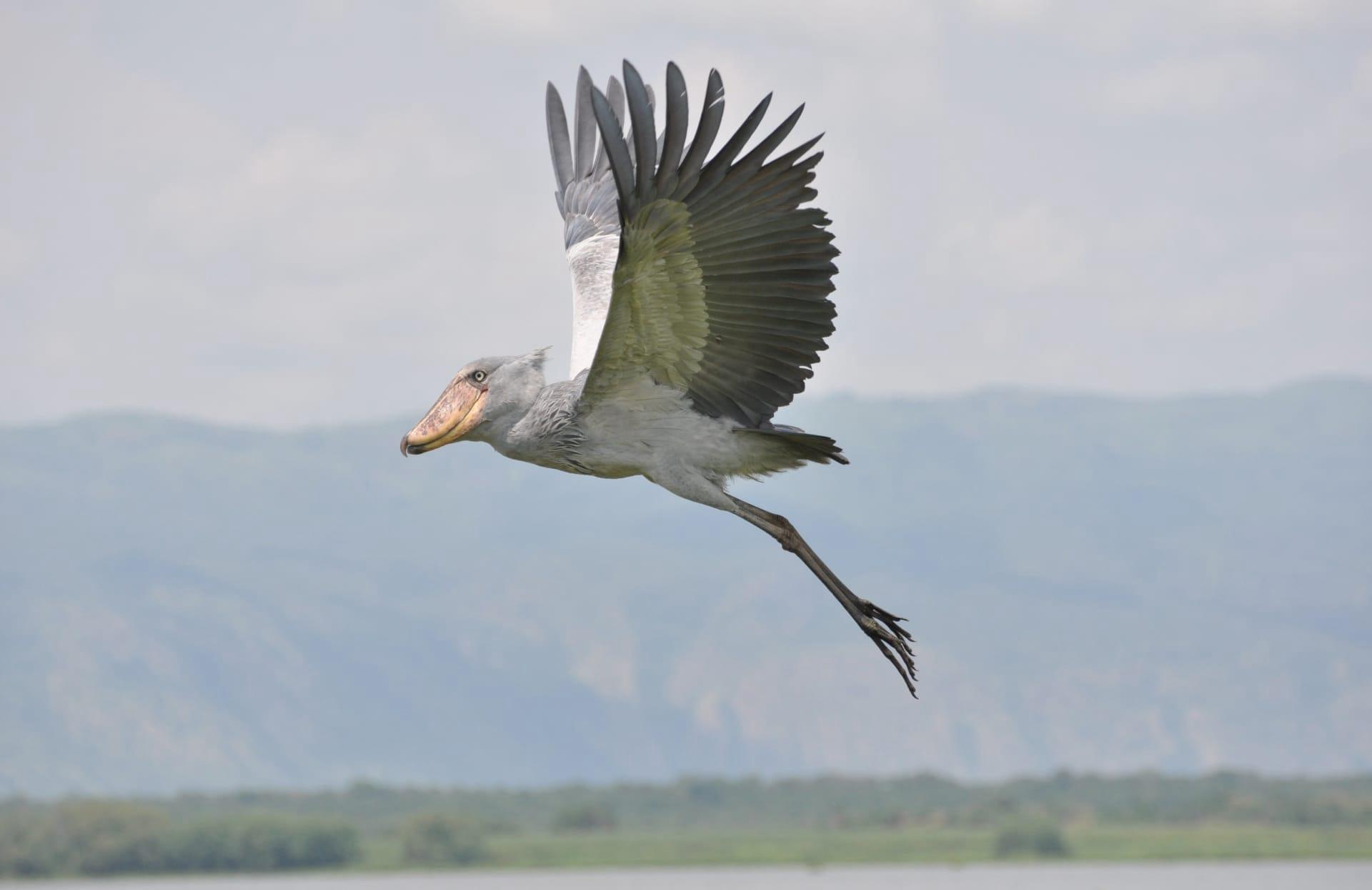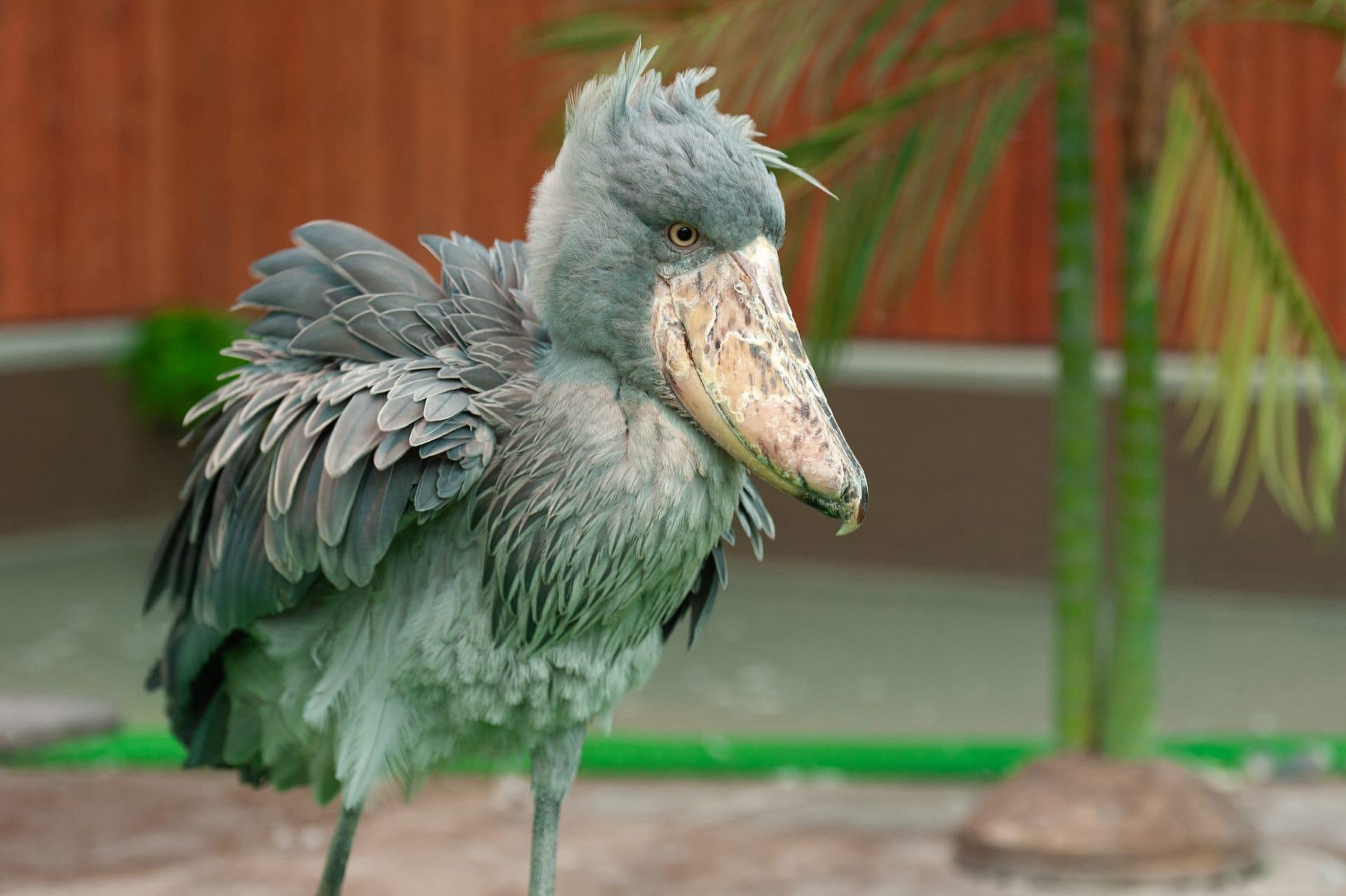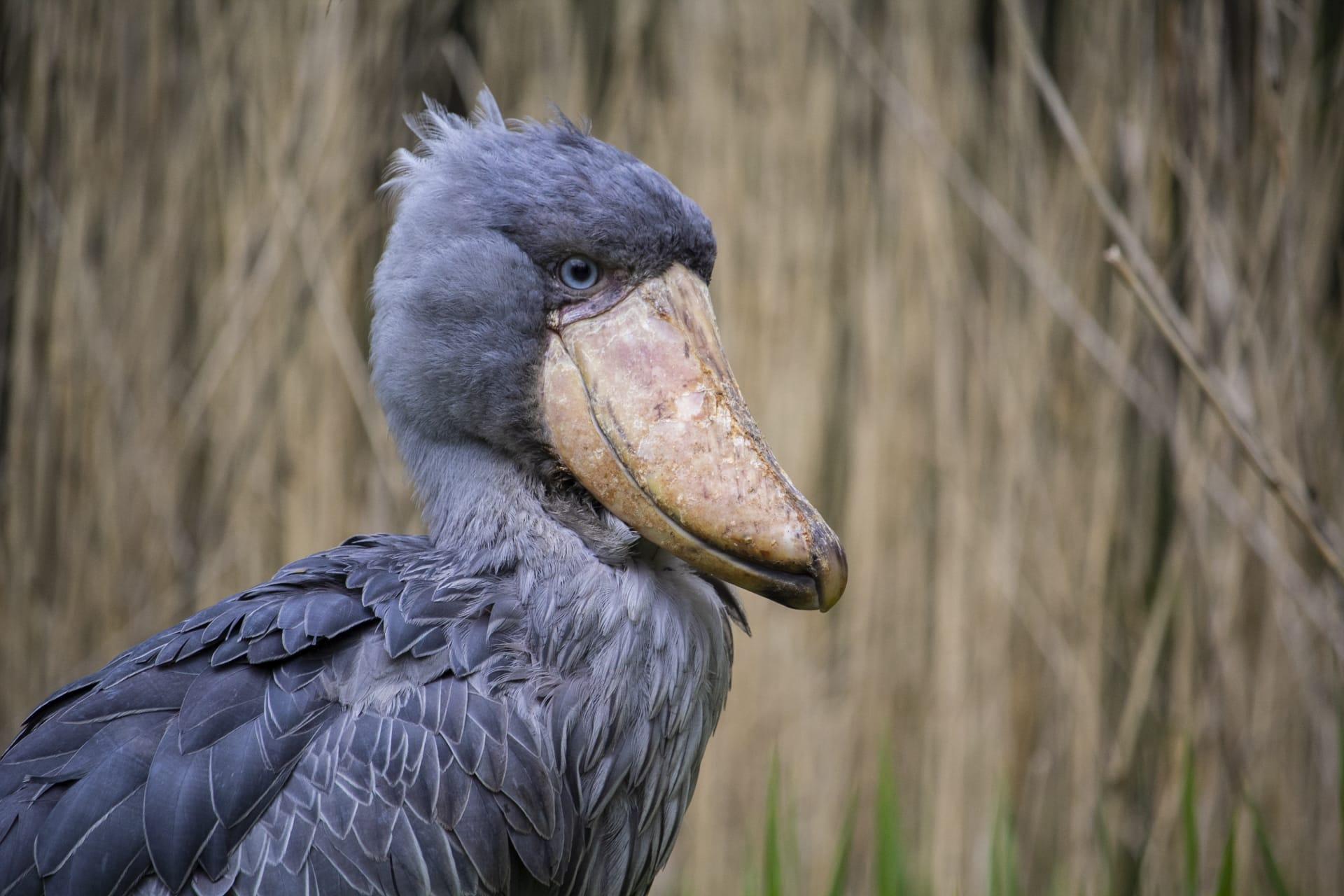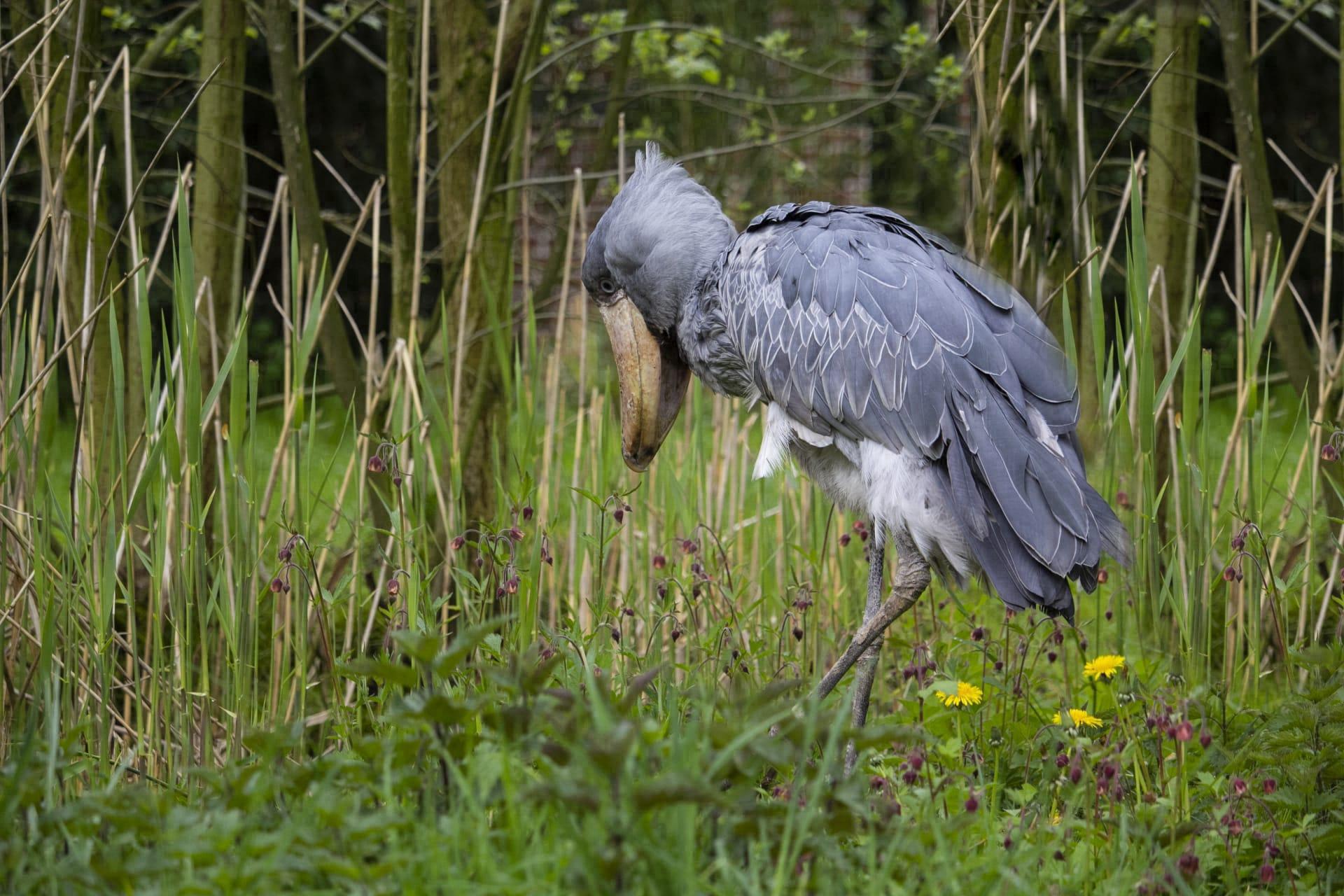Shoebill
- Home /
- Mini Encyclopedia /
- Animal /
- Shoebill
1
The Shoebill, scientifically named Balaeniceps rex, belongs to the family Balaenicipitidae. This striking bird stands out for its enormous, shoe-shaped bill, which has earned it its name. The Shoebill is a unique species, with its closest relatives being pelicans and herons, though it differs significantly in appearance and behavior. This bird's lineage traces back to the Oligocene epoch, making it a living fossil that has roamed our planet for millions of years.
Shoebills are native to the freshwater swamps of tropical East Africa, with a distribution range primarily concentrated in countries like Uganda, Rwanda, eastern Democratic Republic of the Congo, and Zambia. They favor large, undisturbed wetlands, often in remote areas, which makes them a bit of a challenge to spot. These birds are typically found in papyrus swamps and on the fringes of dense marshes. The Shoebill's habitat is crucial to its survival, as it relies heavily on these specific environments for breeding and feeding.

2
Question: Is it true that Shoebills are aggressive and dangerous to humans?
Answer: This is a common misconception about Shoebills. In reality, these birds are generally shy and reclusive, preferring to keep a distance from human activity. They are not inherently aggressive towards people. However, like any wild animal, Shoebills can become defensive if they feel threatened, especially during their breeding season or if their nesting area is disturbed. It's important to respect their space and observe them from a safe distance to avoid any potential conflict. Overall, the portrayal of Shoebills as dangerous to humans is more myth than fact.

3
Shoebills have developed a remarkable set of survival strategies that make them well-adapted to their swampy habitats. One of their most notable tactics is their incredible stillness. They can stand motionless for hours, waiting for the perfect moment to catch their prey, which includes fish, frogs, and even small reptiles. This patience and precision make them formidable hunters.
Another survival strategy is their nesting behavior. Shoebills build large nests out of vegetation, often on floating platforms in marshy areas. This location choice keeps their eggs and chicks relatively safe from land predators. The parents take turns incubating the eggs and are fiercely protective of their nest, showcasing a high level of parental care which is essential for the survival of their offspring in a challenging environment.

4
In the ecosystem, Shoebills play a crucial role as apex predators in their habitat. Their diet mainly consists of lungfish, catfish, and other aquatic creatures, which helps maintain a healthy balance in the wetland ecosystem. By preying on these species, Shoebills help control their population, ensuring that no single species dominates the aquatic environment. This balance is essential for the overall health of the wetlands.
The presence of Shoebills also indicates a healthy ecosystem. Since they require large, undisturbed wetlands to thrive, their presence is often a sign of a well-preserved habitat. This makes Shoebills an important species for conservationists to monitor, as their status can provide valuable insights into the health of the ecosystem they inhabit. Protecting Shoebills indirectly helps in conserving a wide range of other species that share their habitat.

5
Film: "The Secret Life of the Shoebill" is a captivating documentary produced in the United States in 2018. This film delves deep into the mysterious world of Shoebills, showcasing their unique behavior and habitat in the African wetlands. It provides an intimate look at their hunting techniques, breeding habits, and the challenges they face in their daily survival.
Book: "Wings in the Swamp: The Shoebill Story" is a comprehensive guide to these enigmatic birds. Published in the United Kingdom in 2020, authored by ornithologist David Attenborough, the book offers a detailed exploration of the Shoebill's life cycle, habitat, and conservation status. It's filled with stunning photographs and insights gathered from years of field research.
Book: "Guardians of the Wetlands: Shoebills in Focus" by American wildlife biologist Sarah Green, released in 2022, is another must-read. This book delves into the ecological importance of Shoebills and their role in African wetland ecosystems. It also discusses the conservation efforts being made to protect these magnificent birds and their habitats, providing readers with a blend of scientific research and compelling storytelling.